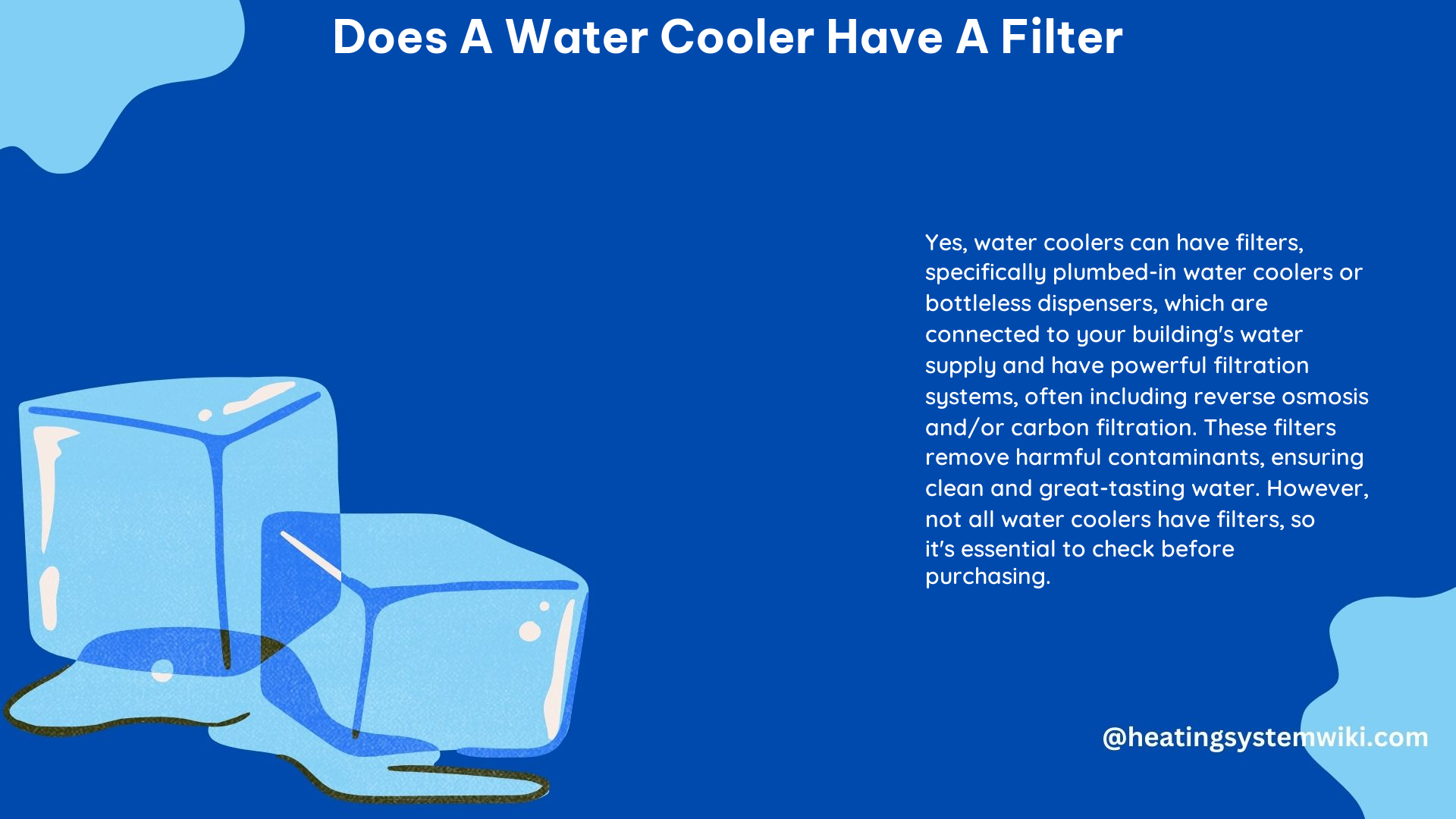Water coolers are a popular choice for providing clean, refreshing drinking water in homes, offices, and other settings. While not all water coolers have built-in filtration systems, many models do feature filters that can effectively remove various contaminants and improve the taste and quality of the water. In this comprehensive guide, we’ll delve into the technical specifications of water cooler filters, explore the differences between filtered and non-filtered models, and provide step-by-step instructions for installing and maintaining these essential components.
Types of Water Coolers: Filtered vs. Non-Filtered
Water coolers can be broadly categorized into two types based on their filtration capabilities:
- Water Coolers with Built-in Filters:
- These water coolers typically use activated carbon filters, which are highly effective at removing chlorine, bad tastes, and odors from the water.
- Activated carbon filters work by adsorbing these contaminants onto their vast internal surface area, trapping them and preventing them from reaching the water supply.
- Benchtop water coolers and plumbed-in (mains-fed) water coolers are common examples of models with built-in filters.
-
Undersink chillers, which are plumbed directly into the water pipe, may or may not feature filtration, depending on the specific model.
-
Water Coolers without Filters:
- Bottled water coolers, which dispense purified water in disposable bottles, do not have any built-in filtration capabilities.
- These coolers rely on the pre-filtered water provided in the bottles and do not filter the water from the source.
Technical Specifications of Water Cooler Filters

The performance and effectiveness of water cooler filters can vary depending on the specific model and the type of filtration technology used. Here are some key technical specifications to consider:
Activated Carbon Filters
- Activated carbon filters are the most common type of filter found in water coolers with built-in filtration systems.
- These filters contain a massive amount of internal surface area, with millions of tiny pores and crevices that can effectively trap and adsorb a wide range of contaminants, including:
- Chlorine
- Volatile organic compounds (VOCs)
- Pesticides
- Heavy metals (e.g., lead, mercury)
- Bad tastes and odors
- Activated carbon filters typically need to be replaced every 12 months or sooner, depending on the frequency of use and the quality of the water source.
Filter Cartridge Specifications
- Filter cartridges for water coolers come in a variety of sizes and capacities, ranging from 5 gallons to 20 gallons or more.
- The Filteroo Blue, for example, features a 20-liter (5.3-gallon) holding tank and a cartridge that can remove contaminants such as fluoride.
- The Alkaway Ultrastream is another water cooler filter option that is plumbed directly into the water source, providing unlimited filtered water.
- It’s important to check the manufacturer’s recommendations and certifications when selecting a replacement filter cartridge to ensure compatibility and optimal performance.
Advanced Filtration Technologies
Some water cooler models feature more advanced filtration technologies beyond basic activated carbon filters:
- The Culligan ZeroWater 5-gallon water cooler, for instance, uses a 5-stage filtration system that is IAPMO certified to reduce PFOA/PFOS, lead, chromium, and mercury.
- This system is capable of removing up to 99.6% of Total Dissolved Solids (TDS) from the water, providing exceptionally clean and safe drinking water.
DIY: Installing and Maintaining Water Cooler Filters
Properly installing and maintaining water cooler filters is essential for ensuring the continued performance and longevity of your filtration system. Here’s a step-by-step guide:
-
Identify the Filter Location: Locate the filter cartridge within your water cooler, which is typically found either inside the machine or in a separate compartment.
-
Purchase a Replacement Filter: Ensure that you purchase a replacement filter that is compatible with your specific water cooler model. Refer to the user manual or the manufacturer’s website for the correct filter specifications.
-
Remove the Old Filter: Follow the manufacturer’s instructions to safely remove the old filter. This usually involves twisting or pulling the filter out of its housing.
-
Install the New Filter: Carefully insert the new filter into the filter housing, making sure to follow the manufacturer’s instructions. Ensure that the filter is securely in place and that the O-ring is correctly positioned to prevent any leaks.
-
Flush the New Filter: Run water through the new filter for a few minutes to remove any carbon fines or air bubbles that may have been introduced during the installation process.
-
Schedule Regular Maintenance: Check the manufacturer’s recommendations for the recommended filter replacement frequency and schedule regular maintenance to ensure optimal performance. Depending on usage and water quality, filters may need to be replaced every 6 to 12 months.
By following these steps, you can ensure that your water cooler filter is properly installed and maintained, providing your family, colleagues, or customers with clean, safe, and great-tasting drinking water.
References
- Pro Drinking Fountains. (n.d.). Water Filter Systems & Replacement Filters for Water Coolers. Retrieved from https://www.prodrinkingfountains.com/water-cooler-replacemet-filters-filter-systems/
- My Water Filter. (2021-10-15). Do Water Coolers Filter Water? Retrieved from https://mywaterfilter.com.au/blogs/learning/do-water-coolers-filter-water
- ZeroWater. (n.d.). 5-Gallon Water Cooler | Culligan ZeroWater. Retrieved from https://www.zerowater.com/products/filtered-water-cooler
